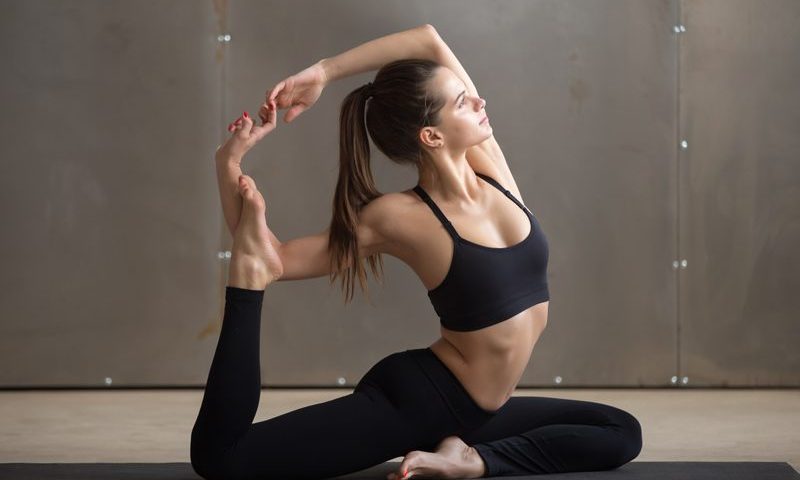
Yoga and the Ego
29th March 2019
Yoga and Gratitude
5th April 2019What’s Nada Yoga?

Nada yoga is the yoga of sound. Meaning “union through sound’, the practice is an ancient Indian system of inner transformation through tone and sound. Nada is based on the idea that the world and everything in it, including us as humans, is made up of sound vibrations. Using sound vibrations and resonances, the practice is used to treat a range of psychological and spiritual conditions. Regular practice can also increase awareness of the chakras and help to keep them clear and energised.
Nada yoga uses two types of sound: internal and external. In Sanskrit, internal sound is known as Anahata, and external sound is known as Ahata. According to the ancient philosophy, focussing on external sounds helps to quiet the mind and allows us to listen to our own Anahata. If you’re a regular yogi, you may be aware that the Anahata is the heart chakra. Interestingly, this energy point is responsible for listening to the internal sound. In this article, we explore the questions ‘what’s Nada yoga?’ In more detail. Before getting started, put on a flexible pair of yoga pants and a comfy top.
Different Branches
There are a few different branches of Nada yoga. Below, we explore some of the most popular.
Shabd and Shakti
The first two branches are called Shabd and Shakti. Both of these practices focus on mantras and their spiritual properties. However, their way of practising differs slightly.
Bhakti
The next branch of Nada is called Bhakti yoga. When translated from Sanskrit, Bhakti means devotion. During a Bhakti session, practitioners will chant devotional songs to connect to the higher self.
Nada
The fourth branch of Nada yoga is simply known as ‘Nada’. Often regarded as the main branch, the practice uses pure sound to facilitate meditation. Unlike the other branches, there are no mantras involved in Nada yoga. Typically, Nada practitioners will use classical Indian music to help them focus. During this practice, yogis will not only develop their spiritual practice but also their musical development. As your knowledge of the music expands, so will your spiritual practice. Of course, you don’t need to be a professional musician to benefit from Nada. People from all different backgrounds can benefit greatly from it. Instead of focussing on physical form, Nada yoga is all about you and how you inhabit your body, how you relate to yourself, how you align your mind, and how you express your soul.

How to Practice
The vocal exercise below is commonly used in Nada yoga. Keep reading to learn how to practice it.
To practice the exercise, sit in a comfortable position with your back straight. When you’re comfortable, take a deep breath in and focus on your body. If you can feel tension anywhere, manoeuvre yourself into a more relaxed position. If you can, try to maintain correct alignment through your back and neck.
When you’re ready, take another breath and make a simple “ah” sound, like you’re saying the end of the word “spa”. As you sing this tone, listen to yourself and pay attention to the act of emitting it. Next, check in with your mind: are you wary of expressing this sound? If you are, lower your volume. In Nada yoga, you don’t need to open up all at once. Take your time and gradually build up your confidence. If you’re feeling tense or anxious, can you hear that in your voice? Observe the sound that your body is making. If your voice is shaking, let it shake. If your voice is loud, let it be loud. The most important part of Nada is allowing yourself to be just as you are.
In day-to-day life, we spend time having to compromise, refrain, and adjust. With Nada, you are able to craft an inner template for yourself. Give your voice the freedom to be exactly as it is, without having to compromise. Whatever sound you emit, let it be. However, remember to keep your mind focussed and aware throughout the exercise. This will allow your voice to gradually open up and naturally realign itself.
Listen to Your Body
The next part of the exercise is all about listening to your body. Continue breathing deeply and softly emitting your “ah” on the exhalations. Then, pay extra attention to the body.
Keep an eye on your posture, making sure that your back and neck are correctly aligned. If you can, allow your body to become more relaxed and open, but not so relaxed that you lose control of your sound. This part of the exercise is about finding a balance between relaxation and control. When singing, the shoulders and neck often become tense. Be aware of this and relax the region if necessary.
Next, observe your chest, face, jaw, and eyes. If you feel any tension in these areas, consciously release it. Scan your stomach and hip area, as these regions also accumulate tension. As you focus on each area, continue singing your ‘ah’s and bring some relaxation to them. Advanced practitioners may be able to bring the sound vibrations to different areas of the body. If you’re just getting started, though, don’t worry about this for now. All you need to do is let your voice open up and your body realign itself.
In Summary
So, let’s recap. What’s Nada Yoga? Unlike traditional yoga, Nada yoga doesn’t focus on physical form. Instead, the practice uses sound vibrations to connect the body and mind. Additionally, it can be used to heal a range of psychological and spiritual conditions. Because of this, Nada is referred to as the yoga of sound. If you’re interested in using the practice, pick up some comfortable yoga tops and practice the exercise above. You certainly won’t regret it!

